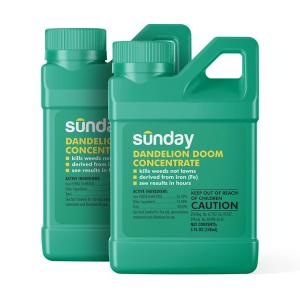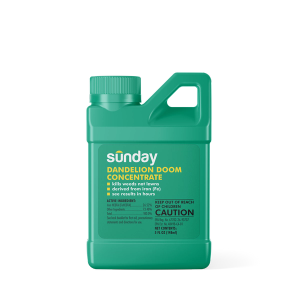The problem with bindweed
It’s not necessarily harmful, per se, as its flowers will attract beneficial insects, but it can spread pervasively and crowd out smaller plants. It’s also an incredibly tough weed to control because it has a tough root system that can survive when its vines are cut or when it’s treated with herbicide.
Even a small section of root in the soil is more than plenty to encourage bindweed to grow back and do what it does best: spread.
The two types of bindweed
There are two types of bindweed: hedge bindweed and field bindweed. Both resemble the morning glory flower but have distinct differences.
Hedge Bindweed

Hedge bindweed (Calystegia sepium) has arrowhead-shaped leaves with white trumpet-shaped flowers with thicker stems than field bindweed.
Field bindweed

Field bindweed (Convolvulus arvensis) also has arrowhead-shaped leaves, but its flowers are smaller and trumpet-shaped, varying in color from white to pink.
3 ways to get rid of bindweed
Regardless of which bindweed you have in your yard, the steps below will eliminate it. Just don’t give up! Stay vigilant.
Cut it back
Be patient yet diligent. The best way to get rid of either type of bindweed is to snip it at the soil level. Don’t bother pulling up the weed, or it’ll just sprout back. It’s that resilient. Just keep cutting it at the ground level, and it’ll eventually starve the weed since it’s unable to photosynthesize.
Pour boiling water on it
This is a great all-natural solution for dealing with bindweed, as the hot water will extensively damage the plant. You’ll want to pour the hot water on the weed and around it, up to a 3-foot radius.
Just be careful when handling boiling water!
Sunday Tip:
This may not be the ideal solution if the bindweed is cohabitating in your flower or vegetable garden, as boiling water will kill the other plants.
Herbicides as last resort
As resilient as bindweed is, using a specialty herbicide may be the best route if cutting it or treating it with boiled water has yielded little results. Again, this may impact other plants in the area, so be mindful of that when choosing this method.
How to prevent bindweed
Bindweed is a pretty pervasive plant. In fact, it can grow from both seeds and roots. Quite amazingly, bindweed seeds can remain viable for up to 30 years in the soil before they pop up again.
The best way to prevent bindweed from taking over your lawn or garden is to, quite frankly, deal with it the second you spot it in your yard. Because you can’t know if viable seeds are underground, just waiting to germinate. All you can do is take care of the vines the moment they appear above ground. That said, sometimes fighting bindweed with other plants or using mulch may create just enough shade over the ground to keep bindweed from popping up.
Cited sources
Bindweed identification. Cornell University.
Controlling perennial bindweed takes persistence. Oregon State University.
The Noxious, Persistent, Invasive, and Perennial Bindweeds. PennState Extension.



















